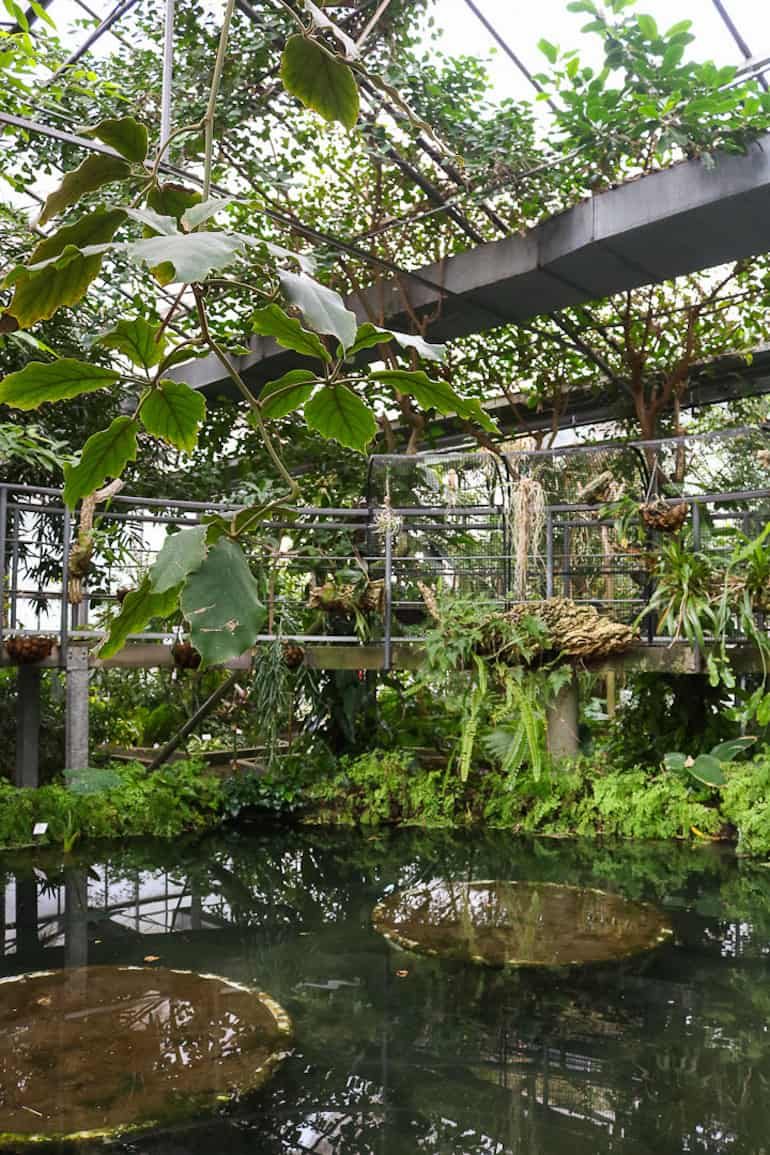A journey through the forests of the world
The city of Rome is unique in many ways, historical ruins, grandiose chapels, amazing food, all wrapped up in the richness of Italian culture. Despite this, Rome is still a city and when you need a break from the bustling streets but can’t get away, we recommend you escape to the Botanical Garden in Trastevere.
The garden has been located behind the Corsini Palace, between the Trastevere district and Gianicolo Hill, since 1883 and is taken care of by the Department of Environmental Biology of the Sapienza University of Rome. The unique thing about this serene space is that it is not only a botanical garden, but also an archeological area. Situated on the Septimius Severus Baths, the location has been characterized with the presence of architectural discoveries of considerable historical and artistic interest.

INSPIRATION
The Ultimate Guide to Rome’s Trastevere Neighborhood
The Greenhouses
There are four greenhouses on the grounds, the Corsini Greenhouse, the Monumental Greenhouse, the French Greenhouse and the Tropical Greenhouse. Each site houses various plants that are not native to the Italian ecosystem like cacti from America and Africa and lush trees and flowering plants from the Amazon Rainforest. Although the greenhouses are primarily used for study, as a visitor you will feel like you have traveled to all the world’s most exotic conditions when you enter these miniature ecosystems.

Palms and Coniferous Trees
The garden is home to 60 different types of coniferous trees, including sequoias and pines, and 35 different types of palm trees. Originally, the view from the palace gates to the top of the hill was minimal, but now the view is blanketed by the garden’s growing population of trees. Housed together are trees from all over the world including tall California sequoias, an extraordinary Afghan palm tree that grows horizontally and a once-believed-to-be-extinct Wollemia pine from Australia. Among the trees, you can experience a journey through the forests of the world.

Japanese Garden
Designed by Ken Nakajima in 1993, the Japanese Garden layout displays a modern application of traditional Japanese garden rules. The area itself is the most tranquil environment in Rome, with its calming waterfalls, beautiful magnolia trees and delicate shrubbery, you will almost forget that you’re in one of the busiest cities in the world. Also, at the Japanese Garden you can witness an amazing view of the cityscape amongst the flourishing trees. Explore a little further and you can even stumble upon a stunning bamboo forest.


Rose Garden
The rose section sits atop a small hill in the middle of the garden. From the top, you can visually see how the attributes of flowers have changed throughout the centuries due to artificial selection. At the highest point, you can spot wild roses which simply have five petals and only grow in May. As you make your way down the aromas, you can see how common-day flowers have come about, with more than 100 petals and blossoming year-round. In this labyrinth of beauty, you will definitely get lost in the allurement of nature.

Medical garden
Modern pharmaceuticals have their roots in the exquisiteness of plant-based medicine and it is amazing to think that some wild plant can cure you of everyday ailments. Take a trip back in time to the beginning of medicine at the medical garden. There are two sections of this garden, one that is organized by the disease in which they aid and the other by their botanical families. To make things a little more user friendly, the garden is currently installing key codes on the name tags of the plants so that you can access their common information while you explore.

The Living Chapel
The Living Chapel, a project originate by Australian-Canadian music composer Julian Darius Revie, is coming alive among the trees and flowers of the Rome’s Botanical Garden. Nature, Art, Music and Architecture unite creating a sacred space of serene harmony and inviting people ti join together in caring for our World. The project, inspired by Pope Francis’s encyclica Laudato Si’ and the United Nations 2030 Agenda for Sustainable Development aims to encourage worldwide acts of ecological restoration.
SEE ALSO:
Gardens and Parks in Rome
Villa Borghese
Villa Torlonia
Villa Celimontana
Villa Doria Pamphilj
The Garden of Roses
Address
Museo Orto Botanico, Largo Cristina di Svezia 23A (Trastevere)
Opening time
Everyday from 9am to 6.30pm – Butterfly’s House closed on Mondays
Reservation recommended: ortobotanicoroma@yahoo.com or 0649917135
Entry fee
€4 | Butterfly’s House 4,00 € (plus entrance ticket)




